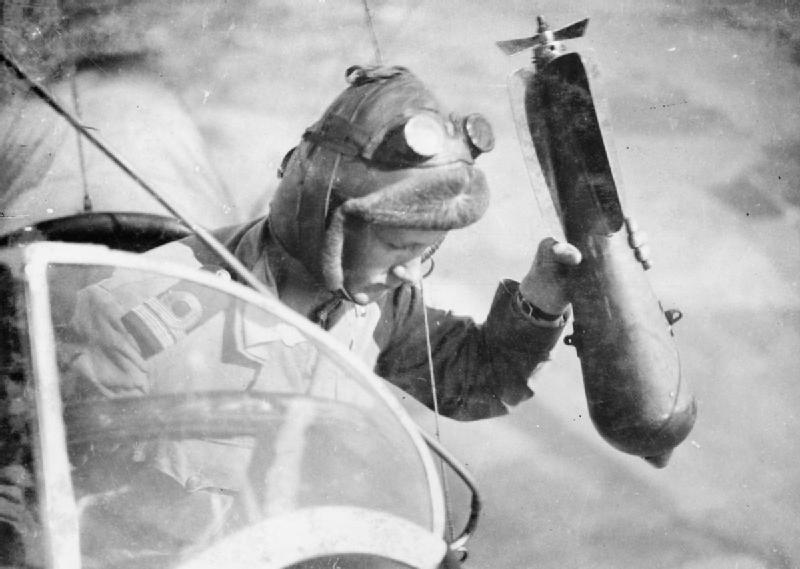Aircraft ordnance on:
[Wikipedia]
[Google]
[Amazon]
 Aircraft ordnance or ordnance (in the context of
Aircraft ordnance or ordnance (in the context of

 Ordnance can be divided into guided and unguided categories based on their targeting capabilities. Guided ordnance, such as
Ordnance can be divided into guided and unguided categories based on their targeting capabilities. Guided ordnance, such as
 Aircraft ordnance or ordnance (in the context of
Aircraft ordnance or ordnance (in the context of military aviation
Military aviation is the design, development and use of military aircraft and other flying machines for the purposes of conducting or enabling aerial warfare, including national airlift (air cargo) capacity to provide military logistics, logist ...
) is any expendable weaponry (e.g. bombs
A bomb is an explosive weapon that uses the Exothermic process, exothermic reaction of an explosive material to provide an extremely sudden and violent release of energy. Detonations inflict damage principally through ground- and atmosphere-tra ...
, missiles
A missile is an airborne ranged weapon capable of self-propelled flight aided usually by a propellant, jet engine or rocket motor.
Historically, 'missile' referred to any projectile that is thrown, shot or propelled towards a target; this u ...
, rockets and gun
A gun is a device that Propulsion, propels a projectile using pressure or explosive force. The projectiles are typically solid, but can also be pressurized liquid (e.g. in water guns or water cannon, cannons), or gas (e.g. light-gas gun). So ...
ammunition
Ammunition, also known as ammo, is the material fired, scattered, dropped, or detonated from any weapon or weapon system. The term includes both expendable weapons (e.g., bombs, missiles, grenades, land mines), and the component parts of oth ...
) used by military aircraft
A military aircraft is any Fixed-wing aircraft, fixed-wing or rotorcraft, rotary-wing aircraft that is operated by a legal or insurrectionary military of any type. Some military aircraft engage directly in aerial warfare, while others take on su ...
. The term is often used when describing the payload of air-to-ground weaponry that can be carried by the aircraft or the weight that has been dropped in combat. Aircraft ordnance also includes air-to-air, anti-ship and anti-submarine weapons.
Some aircraft types can carry a wide variety of ordnance – for example, the Fairchild AU-23 Peacemaker
The Fairchild AU-23 Peacemaker is an American armed gunship, Counter-insurgency aircraft, counter-insurgency, utility transport aircraft developed from the Pilatus PC-6 Porter for the United States Air Force. A total of 35 were built under licen ...
could use forward-firing gun pods, 500 and 250 pound bombs, napalm
Napalm is an incendiary mixture of a gelling agent and a volatile petrochemical (usually gasoline or diesel fuel). The name is a portmanteau of two of the constituents of the original thickening and gelling agents: coprecipitated aluminium ...
units, cluster bomb
A cluster munition is a form of air-dropped or ground-launched explosive weapon that releases or ejects smaller submunitions. Commonly, this is a cluster bomb that ejects explosive bomblets that are designed to kill personnel and destroy vehi ...
units, flares, rockets, smoke grenades and propaganda leaflet dispensers.
Ordnance can be carried in a bomb bay
The bomb bay or weapons bay on some military aircraft is a compartment to carry bombs, usually in the aircraft's fuselage, with "bomb bay doors" which open at the bottom. The bomb bay doors are opened and the bombs are dropped when over the ...
or hung from a hardpoint
A hardpoint is an attachment location on a structural frame designed to transfer force and carry an external or internal structural load, load. The term is usually used to refer to the mounting points (more formally known as a weapon station o ...
.
For many weapons there is a limit to the length of time they can be flown (e.g. because of vibration damage); after this their safety or effectiveness is not guaranteed. This can be a problem if weapons designed for high intensity conflict are carried on multiple missions in a long counter-insurgency
Counterinsurgency (COIN, or NATO spelling counter-insurgency) is "the totality of actions aimed at defeating irregular forces". The Oxford English Dictionary defines counterinsurgency as any "military or political action taken against the ac ...
campaign.
History
Guidance

 Ordnance can be divided into guided and unguided categories based on their targeting capabilities. Guided ordnance, such as
Ordnance can be divided into guided and unguided categories based on their targeting capabilities. Guided ordnance, such as Precision-guided munitions
A precision-guided munition (PGM), also called a smart weapon, smart munition, or smart bomb, is a type of weapon system that integrates advanced guidance and control systems, such as Global Positioning System, GPS, laser guidance, or Infrared ...
''(PGMs)'', use advanced technologies like GPS, infared, radar
Radar is a system that uses radio waves to determine the distance ('' ranging''), direction ( azimuth and elevation angles), and radial velocity of objects relative to the site. It is a radiodetermination method used to detect and track ...
or laser
A laser is a device that emits light through a process of optical amplification based on the stimulated emission of electromagnetic radiation. The word ''laser'' originated as an acronym for light amplification by stimulated emission of radi ...
tracking to precisely hit designated targets. Unguided ordnance, commonly known as "dumb bombs," lack guidance systems and rely on the aircraft’s release parameters to strike a target. Though less accurate, unguided bombs are often used for area strikes and are more cost-effective.
Air-to-Ground vs. Air-to-Air Ordnance
See also
*List of aircraft weapons
This is a list of weapons (aircraft ordnance) carried by aircraft.
Guns
In World War I, aircraft were initially intended for aerial reconnaissance, however some pilots began to carry rifles in case they spotted enemy planes. Soon, planes were fi ...
References
{{Authority control Aircraft weapons